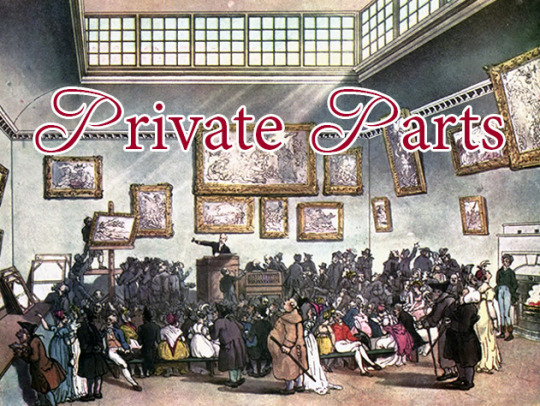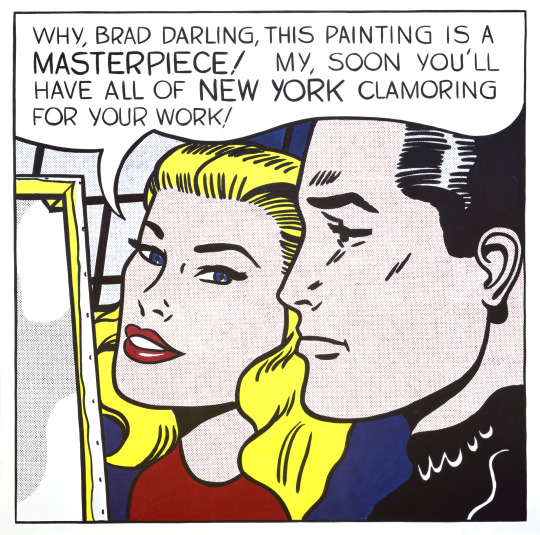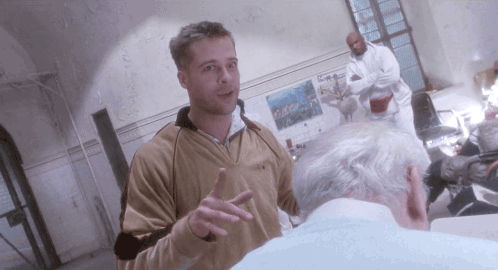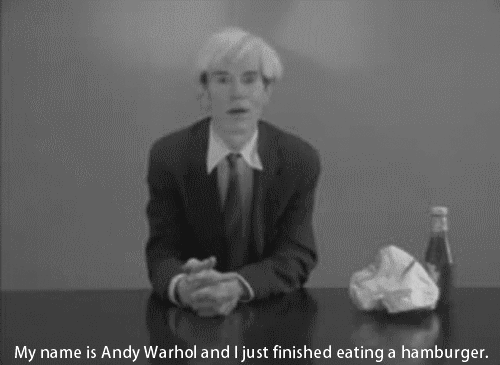
Private Parts is a series exposing the raw, gritty, and true stories behind artworks in private collections. Every week, you’ll find the untold tales of the back stabbings, thefts, and $100 million deals that move these works to secret lairs and impregnable vaults around the world. We’ll always be crazy in love with museums and galleries, but we also believe in giving the people what they want: All the art.
This week, behold Roy Lichtenstein’s Masterpiece.

SOURCEFun Fact: The Masterpiece they’re talking about is a Rococo style painting of a grumpy walrus wearing a top hat.
Lichtenstein had one of those styles that make people rear back and cry, “This is crap. My six-year old could paint that.” First off, any kid creating art like Lichtenstein has a lot of infidelity and ego issues. Way to go with parenting that six-year old, jackass. Lichtenstein’s work is supposed to feel cheap. It’s part of the fun (or, as much fun as you can have watching the worlds of pastel colored people slowly crumble). Dislike what you please, just do it for the right reasons.
Masterpiece is one of Lichtenstein’s iconic riffs on classic DC comics. At their most basic, these works aren’t comics at all. Lichtenstein would find a host of source material to use as fodder for his paintings. His works use the feel and peculiarities of low-brow comics to ask a hoity-toity audience to reconsider art in general.

For Masterpiece, Lichtenstein started with a scene from a comic book where a man drives a woman in a car whose saying, “But someday the bitterness will pass.” Lichtenstein kept their positions, but transposed them to an artist’s studio. Wham, boom, pop, he added the word bubble, gave the hero a name and called it a day.
A lot of the heroes in Lichtenstein paintings are named Brad. The artist found the name classically handsome. In this case, he figured it encapsulated what it felt like to be an artist on the rise in NYC.

Getting named Brad’s a one-way ticket to Studsville.
Allan Kaprow is the guy you have to thank for all this. Lichtenstein met him while keeping a day job teaching at Rutgers, and moonlighting as a jewelry salesperson-slash-mosaic table designer. One day, Kaprow gets tired of the woe-is-me rhetoric from his starving artist buddy and says, “Art doesn’t have to look like art.”
Skewing tautological? Fo sho. Profoundly impactful on Lichtenstein? Certainly. Kaprow’s encouragement brought Lichtenstein out of the galleries to the streets for inspiration. Art, to Lichtenstein, had been about finding what people liked. Now, Lichtenstein felt a heretofore unknown fire under his ass to discover what he found exciting.
Not only that, but Lichtenstein wasn’t the only influential artist out to tuned into art market’s Ben-Day dots shortage. Andy Warhol was doing the same thing with comics at the same exact time as Lichtenstein. The pair even (separately) offered their versions of what became known as Pop art to New York’s best dealer. Lichtenstein’s version of the approach came out on top. Warhol went home and ate a cheeseburger or something.

And here’s where this story departs from the typical Private Parts fare. Masterpiece has been owned by one Agnes Gund for decades. She had personal relationships with Lichtenstein, Jasper Johns, and other contemporary artists of their generation. Masterpiece is both a lynchpin of her 2000+ work collection and a memento of a dear friendship gone by.
Because, for Agnes, art isn’t an investment. Dilettantes that buy up great works just to put them in a vault get her shade. Aggie’s a serious collector, a steward of her works. An old school, high society lady that wants to make a difference on this damn world while there’s time to do it. And a hefty percentage of that support goes toward expanding art appreciation with an education program and by purchasing art from women and artists of color. In all, Gund gives away about $7 million a year. Giving up a painting isn’t her favorite activity, but she isn’t beyond selling one or two if the money will do some good.
With that in mind, Masterpiece is valued at a high of $100 million. The anticipation of the auction block would probably send the price even higher. However, that won’t happen anytime soon. Gund laughs off the idea that she’d sell Masterpiece. It’s one of her favorite works. And as long as she has it, we can enjoy it in whatever museum she next loans it off to.

And for that, Gundie, we salute you.
Sources
- http://www.roylichtenstein.com/masterpiece.jsp
- http://www.theartwolf.com/articles/most-valuable-private-art.htm
- http://legionofandy.com/2013/06/03/roy-lichtenstein-the-man-who-didnt-p…
- http://www.theguardian.com/artanddesign/2013/feb/18/roy-lichtenstein-ta…
- http://www.roylichtenstein.com/masterpiece.jsp
- http://flavorwire.com/327394/roy-lichtensteins-early-pop-art-masterpiec…
- http://www.telegraph.co.uk/culture/art/9857640/Roy-Lichtensteins-lover-…
- http://www.theartstory.org/artist-lichtenstein-roy.htm
- http://www.artic.edu/blog/2012/07/12/lichtenstein-faqs-part-two
- https://books.google.com/books?id=VHHizA7ZW0cC&pg=PA403&lpg=PA403&dq=ro…
- Page 403 https://books.google.com/books?id=VHHizA7ZW0cC&pg=PA403&lpg=PA403&dq=ro…
- http://tumblr.austinkleon.com/post/44231209845
- https://books.google.com/books?id=hRsFjSHBuKUC&pg=PA92&lpg=PA92&dq=roy+…
- Page 92 https://books.google.com/books?id=hRsFjSHBuKUC&pg=PA92&lpg=PA92&dq=roy+…
- http://www.nytimes.com/2014/11/07/giving/a-patron-gives-of-herself-and-…
- http://www.wsj.com/articles/collector-agnes-gund-on-artists-1436554158
- http://www.huffingtonpost.com/sugar-rautbord/art-and-money_b_1550252.ht…
- https://books.google.com/books?id=gH0BWUDuv9sC&pg=PA126&lpg=PA126&dq=Ag…
- Page 126 https://books.google.com/books?id=gH0BWUDuv9sC&pg=PA126&lpg=PA126&dq=Ag…
- http://www.avenuemagazine.com/record-setting-collectors-part-3-agnes-gu…
- http://blog.thefineartblog.com/2015/01/richard-pettibone-auction-prices…









